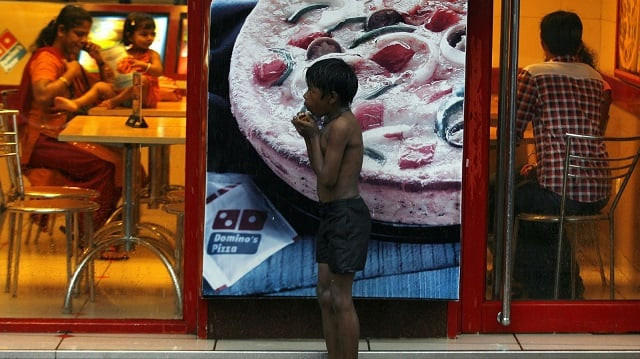Income inequality in India is at it's highest level in 92 years
'Forbes' Indian Rich lists suggest an important increase in wealth of richest Indians after 2000'

PHOTO: REUTERS
Inequality has been the highest in India since 1922, when India introduced the income tax; the report stated basing it on the latest income tax data. The share of national income held by the top one per cent of the country’s population has increased dramatically, specifically since the 1980s, the report says.
Growing inequality threatens to pull societies apart
“According to our benchmark estimates, the share of national income accruing to the top one per cent income earners is now at its highest level since the creation of the Indian Income tax in 1922. The top one per cent of earners captured less than 21 per cent of total income in the late 1930s, before dropping to six per cent in the early 1980s and rising to 22 per cent today,” the economists write.
"Other data sources, such as Forbes' Indian Rich lists, suggest an important increase in the wealth of the richest Indians after 2000," they add.
Piketty is known for his work on income inequality, particularly through his bestseller Capital in the Twenty-First Century. Chancel is the co-director of the World Inequality Lab and the World Wealth & Income Database at the Paris School of Economics. They claim that income inequality was the lowest in the 1970-1980s at a time when India was a government-controlled economy and its GDP growth was quite low.
“Over the 1951-1980 period, the bottom 50 per cent group captured 28 per cent of total growth, and incomes of this group grew faster than the average, while (the) top 0.1 per cent incomes decreased,” their paper says. “Over the 1980-2014 period, the situation was reversed; the top 0.1 per cent of earners captured a higher share of total growth than the bottom 50 per cent (12 per cent vs. 11 per cent), while the top one per cent received a higher share of total growth than the middle 40 per cent (29 per cent vs. 23 per cent),” the report added.
Since 2010, India has added a billionaire every 33 days and Indians’ share in the global billionaires’ club has grown from one per cent to five per cent over the last 20 years. Meanwhile, Piketty has also reiterated his demand for more transparency in sharing income tax data. Access to data is crucial in measuring inequality and understanding the distribution of wealth. India used to publish the All India Income Tax Statistics until 2000. In 2016, the income tax department released tax tabulations for the period between 2012 and 2014.
Islamic finance has potential to end poverty worldwide
"Several reasons have been put forward to explain this gap, including (i) population coverage (it is different between NSSO and NAS, since Non Profit Institutions Serving Households and homeless individuals are not covered by NSSO surveys); (ii) valuation and integration of certain types of services in survey questionnaires (iii) imputed rents (while the NAS incorporates imputed rents, NSSO surveys do not); (iv) consistency of National Accounts estimates; (v) under-reporting and under-sampling of top incomes in survey data," the report claims.



















COMMENTS
Comments are moderated and generally will be posted if they are on-topic and not abusive.
For more information, please see our Comments FAQ